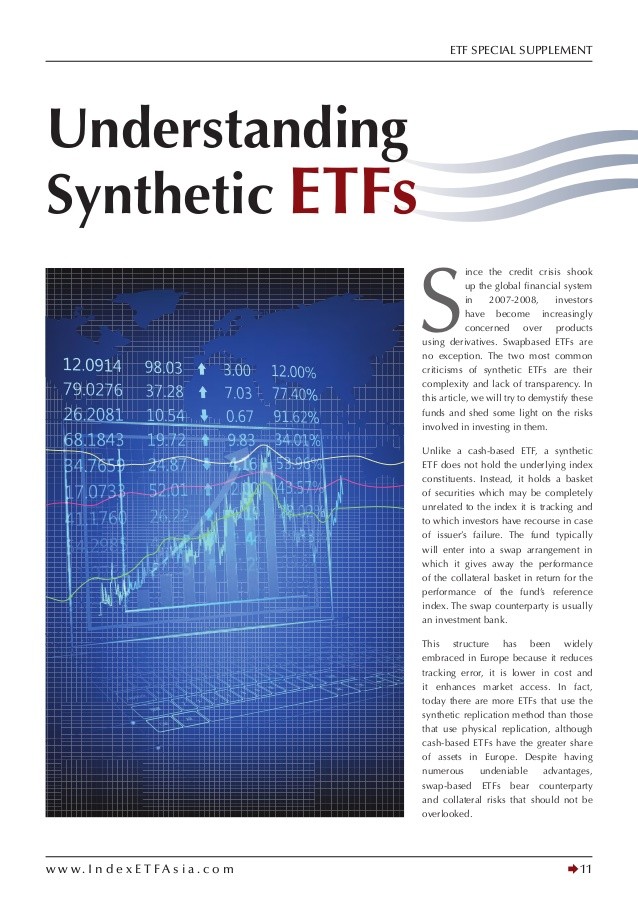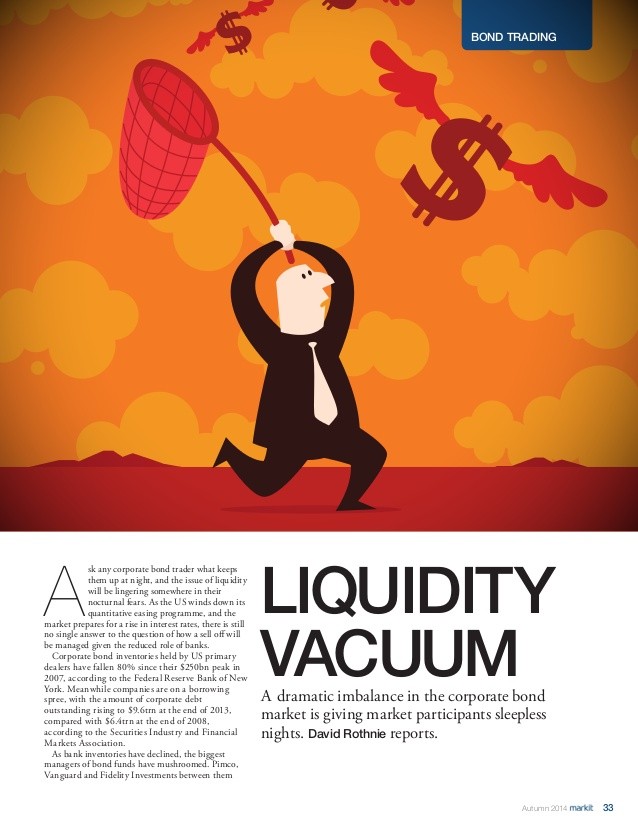ETF Liquidity Demystified
Post on: 9 Май, 2015 No Comment

Intraday liquidity is often cited as a benefit to ETFs, but it is one of the most misunderstood.
Intraday liquidity is one of the most frequently cited advantages of exchange-traded funds, but it is also one of the most misunderstood. Attempts to assess liquidity using traditional metrics drastically underestimate the liquidity of thinly traded ETFs.
Historical trading volume is the wrong metric to rely on in assessing ETF liquidity because, unlike closed-end funds or individual stocks, which generally issue a fixed number of shares in an initial public offering, ETFs may generally issue and redeem blocks of shares on a continuous basis at net asset value (NAV). So, rather than simply matching ETF buyers with sellers, market makers can adjust the supply of ETF shares in response to demand. If buying pressure increases, more shares can be issued; if selling pressure increases, excess shares can be redeemed. This process generally prevents ETFs from trading at significant premiums or discounts to their underlying NAV.
Because ETFs can issue and redeem shares on a daily basis, the liquidity of underlying investments is generally a much more relevant data set. The degree to which a market maker can transact in an ETFs underlying securities without moving the market is generally a good proxy for the degree to which a large trade will impact the funds NAV. Since the vast majority of ETFs invest in highly liquid securities, even thinly traded funds are often much more liquid than historical trading volume might imply. Considering that S&P 500 component stocks traded about 2.9 billion shares per day during the first quarter, its not surprising that even large trades in domestic equity ETFs tend to have a very minor impact on the price of underlying securities. On a fairly regular basis, one can observe significant spikes in ETF trading volume, well in excess of historical averages, without any unusual deviations from the ETFs underlying NAV.
Best Practices for ETF Trading
Armed with a clearer understanding of how to assess ETF liquidity, there are a few simple trading tips that ETF sponsors often recommend to investors to assist them in accessing ETF liquidity. First, limit orders are generally preferred over market orders, enabling investors to control the price at which ETF trades may be executed. In doing so, investors can often access much more depth than what is seen at the top of the order book, since ETF shares can be created or redeemed. Similarly, investors should be wary of placing stop orders, as these will trigger market orders if the stop price is hit.
Second, when placing trades, investors should consult an ETFs intraday net asset value (INAV), which is calculated every 15 seconds throughout the trading day (and is usually the funds ticker symbol followed by .IV) to ensure its quoted price is within a reasonable margin of the value of the funds underlying portfolio. This is most helpful for ETFs that invest in domestic securities, however, because the INAV may reflect stale prices of foreign securities in markets that are closed.

Finally, if possible, avoid placing orders at the market open or close, as spreads can be much wider at these times. This reflects the relative uncertainty in the price of an ETFs underlying securities.
Why does ETF liquidity matter?
You may be asking yourself why ETF liquidity matters. After all, many investors assume that ETFs tracking specific segments of the market will generally offer very similar returns. However, as the diversity of approaches followed by ETFs has increased over the past decade, so has the divergence in returns, even among funds in the same sector or asset class.
As investors begin to understand ETF liquidity, recognizing that good execution and relatively tight spreads are made possible (even for thinly traded ETFs) by the liquidity of the funds underlying holdings coupled with the ETF creation and redemption process, more attention can be paid to evaluating fund attributes which differentiate one ETF from another, such as index methodology and portfolio holdings. With this knowledge, investors are much better equipped to begin sorting through the ever-growing universe of ETFs, on the basis of truly relevant information, to achieve their objectives.














